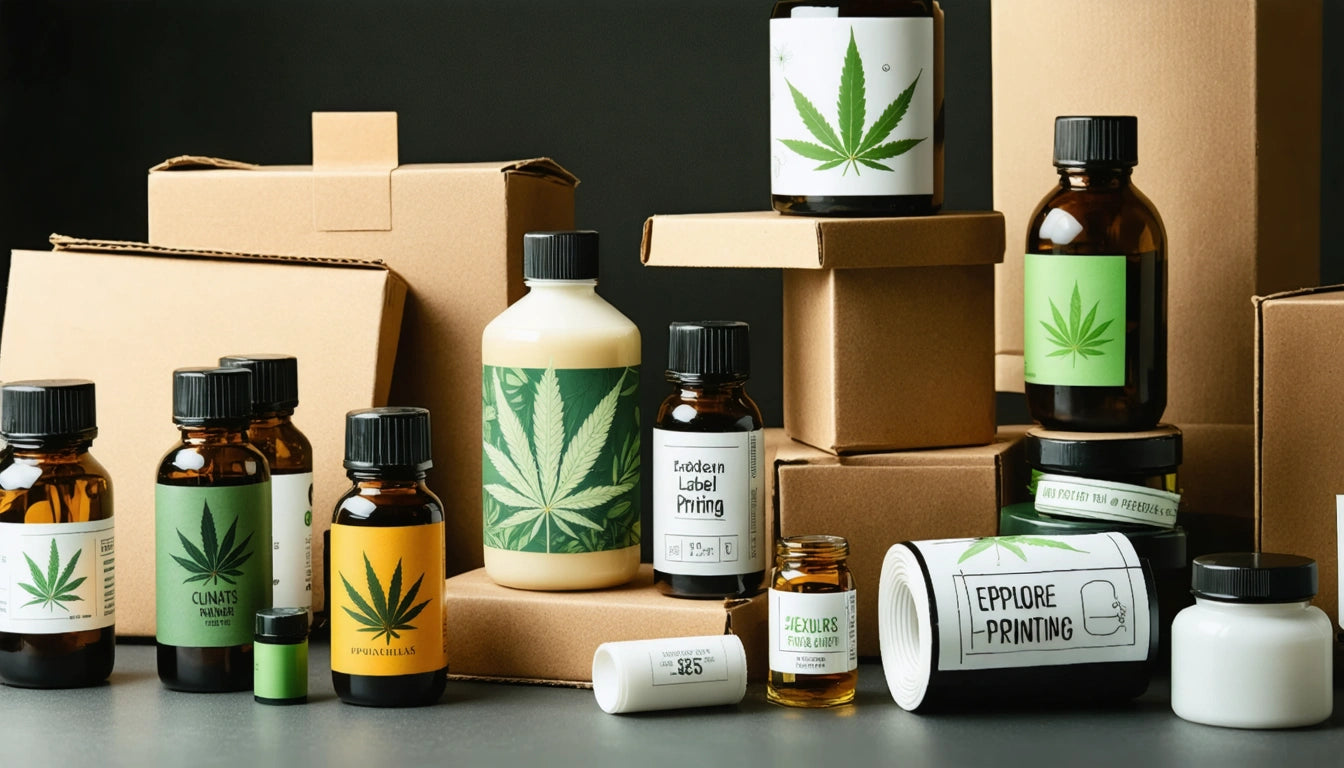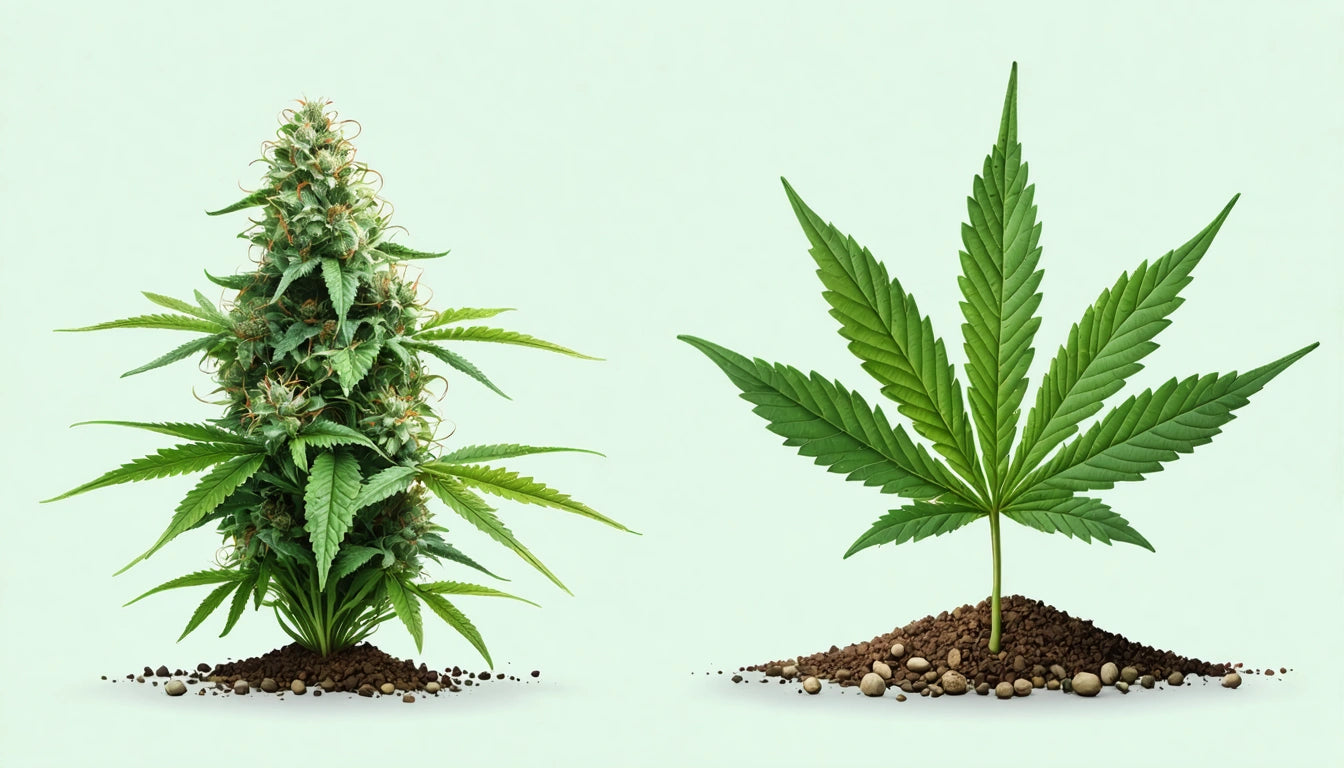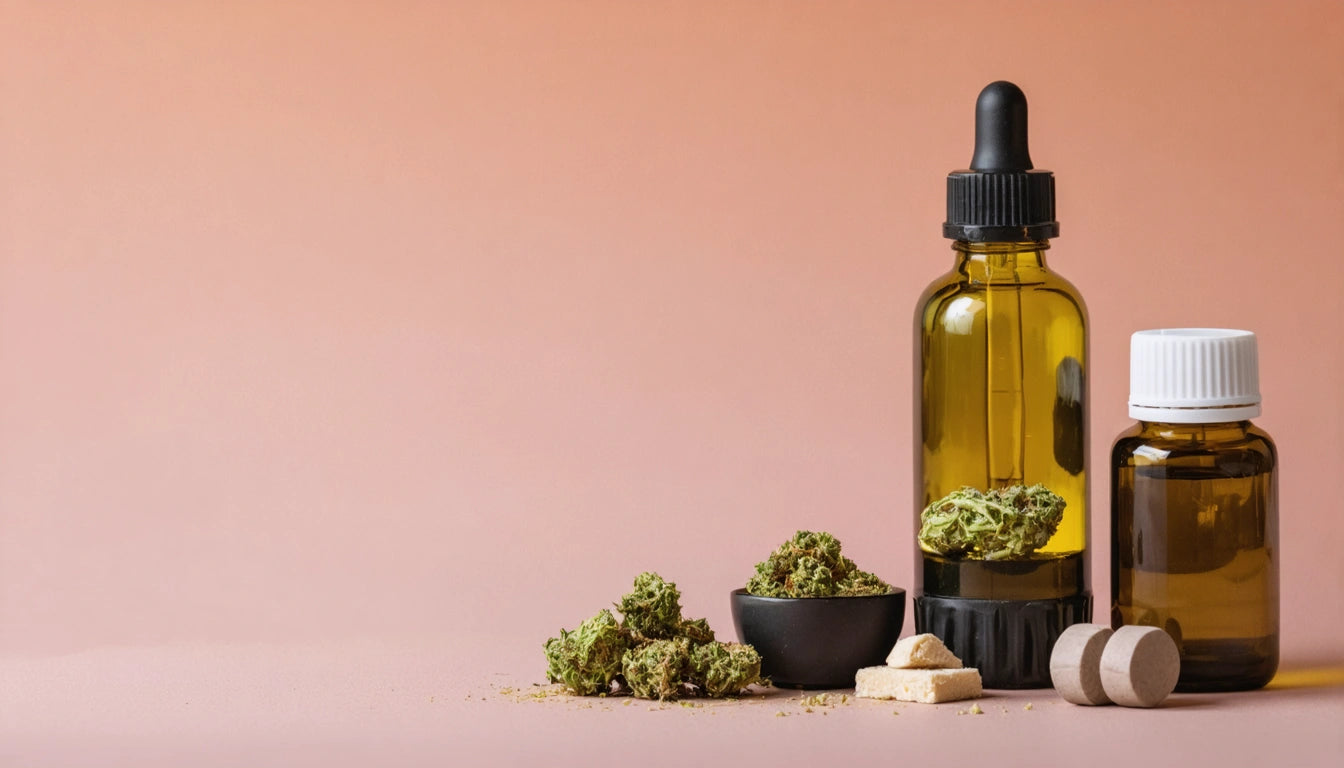Table of Contents
The right label can make or break a cannabis product's shelf appeal and compliance status. As the industry matures, brands must navigate the complex decision between digital and flexographic printing methods to create labels that both attract consumers and meet regulatory requirements. This guide breaks down both printing technologies to help cannabis businesses make informed decisions about their labeling strategy.
Understanding Label Printing Methods
Label printing for cannabis products requires careful consideration of both aesthetic appeal and regulatory compliance. According to state-specific labeling requirements, cannabis packaging must include specific information such as THC content, batch numbers, and warning statements. The printing method you choose affects how these elements appear on your final product.
The two primary printing methods in the cannabis industry are digital and flexographic printing. Each offers distinct advantages depending on your production volume, budget, and design complexity.
Digital Printing: Advantages for Cannabis Brands
Digital printing has revolutionized the cannabis packaging industry with its flexibility and quick turnaround times. This method works by directly transferring digital files to the printing surface without plates or mechanical setup.
Key Benefits of Digital Printing
- Low setup costs with no plate requirements
- Ideal for short to medium runs (typically under 10,000 labels)
- Perfect for variable data printing such as batch numbers and THC percentages
- Quick turnaround times for seasonal or limited-edition products
- High-resolution photographic quality for detailed brand imagery
For cannabis startups or brands with multiple SKUs, digital printing offers the flexibility to produce small batches of labels without significant upfront investment. This is particularly valuable when testing new products or updating designs to comply with changing regulations.
Flexographic Printing: Benefits for Large-Scale Production
Flexographic printing, often called flexo, uses flexible relief plates and fast-drying inks to create high-volume, consistent labels. This traditional method remains popular for established cannabis brands with stable, high-volume production needs.
Advantages of Flexographic Printing
- Cost-effective for large print runs (typically over 10,000 labels)
- Consistent color reproduction across massive batches
- Compatible with a wide range of substrates, including specialized materials
- Higher printing speeds for large-scale production
- Durable finishes that resist smudging and environmental factors
Many established cannabis manufacturers rely on flexographic printing for their core product lines, especially when packaging consistency is crucial for brand recognition. For products requiring specialized closures like child-resistant jar caps and lids, flexographic labels can be engineered to withstand constant handling and maintain their appearance.
Cost Comparison: Digital vs Flexographic
Understanding the cost structure of each printing method helps cannabis brands make economically sound decisions for their packaging needs.
Digital Printing Costs
- Minimal setup fees (typically $50-200)
- Higher per-unit costs (approximately $0.15-0.50 per label)
- No plate charges or minimum order requirements
- Cost-effective for small to medium runs
Flexographic Printing Costs
- Higher initial setup and plate costs ($300-1,200 depending on complexity)
- Lower per-unit costs for large runs (approximately $0.03-0.15 per label)
- Economies of scale make this more affordable as volume increases
- Most cost-effective for stable, high-volume products
The breakeven point between these methods typically occurs around 10,000 labels, though this varies based on design complexity, material choice, and finishing options. For brands transitioning from startup to established market presence, comparing in-house labeling versus outsourcing can provide additional cost insights.
Quality Considerations for Cannabis Labels
Beyond cost, quality factors significantly impact which printing method best serves your brand's needs.
Digital Print Quality
- Excellent color reproduction for photographic images
- High resolution (up to 1200 dpi) for fine details
- Consistent quality from first to last label
- Limited specialty finishes without additional processes
Flexographic Print Quality
- Solid color reproduction with spot color accuracy
- Lower resolution (around 300-600 dpi) but sufficient for most designs
- Slight variations possible in very long runs
- Compatible with specialty inks and finishes in a single pass
For premium cannabis products, custom finishes like foil, embossing, and holographic effects can elevate perceived value. Flexographic printing often handles these specialty finishes more efficiently, though digital printing with post-press enhancements can achieve similar results at higher costs.
Choosing the Right Method for Your Cannabis Brand
Selecting between digital and flexographic printing ultimately depends on several key factors specific to your cannabis business:
- Production volume: Digital for under 10,000 labels, flexographic for larger runs
- Design complexity: Digital for photographic quality and fine details
- Variable data needs: Digital excels when each label requires unique information
- Budget constraints: Consider both upfront and per-unit costs
- Timeline requirements: Digital offers faster turnaround for urgent needs
- Substrate compatibility: Ensure your chosen method works with your packaging material
Many cannabis brands begin with digital printing during product development and initial market entry, then transition to flexographic printing as products gain traction and production volumes increase. Some even maintain a hybrid approach, using flexographic printing for their core products and digital for seasonal or limited releases.
Understanding these printing technologies empowers cannabis brands to make strategic decisions that balance quality, compliance, and cost-effectiveness in an increasingly competitive market. By choosing the right printing method for your specific needs, you can create labels that not only meet regulatory requirements but also enhance your brand's presence on dispensary shelves.











Leave a comment
All comments are moderated before being published.
This site is protected by hCaptcha and the hCaptcha Privacy Policy and Terms of Service apply.